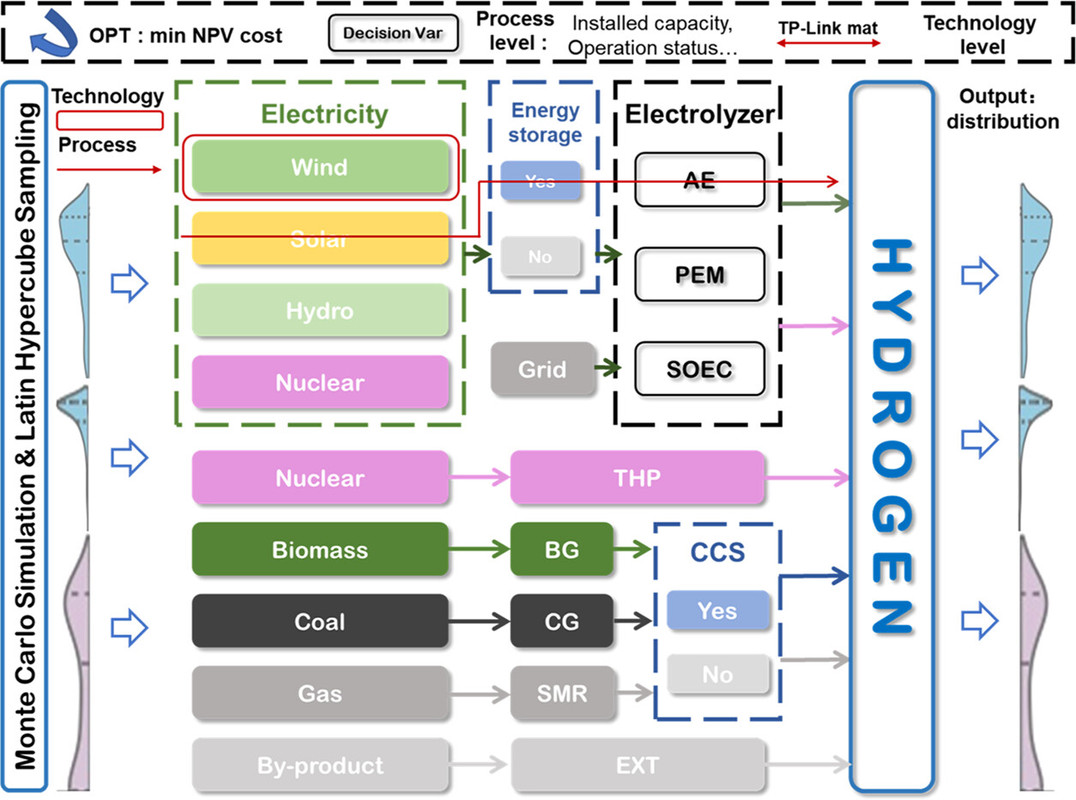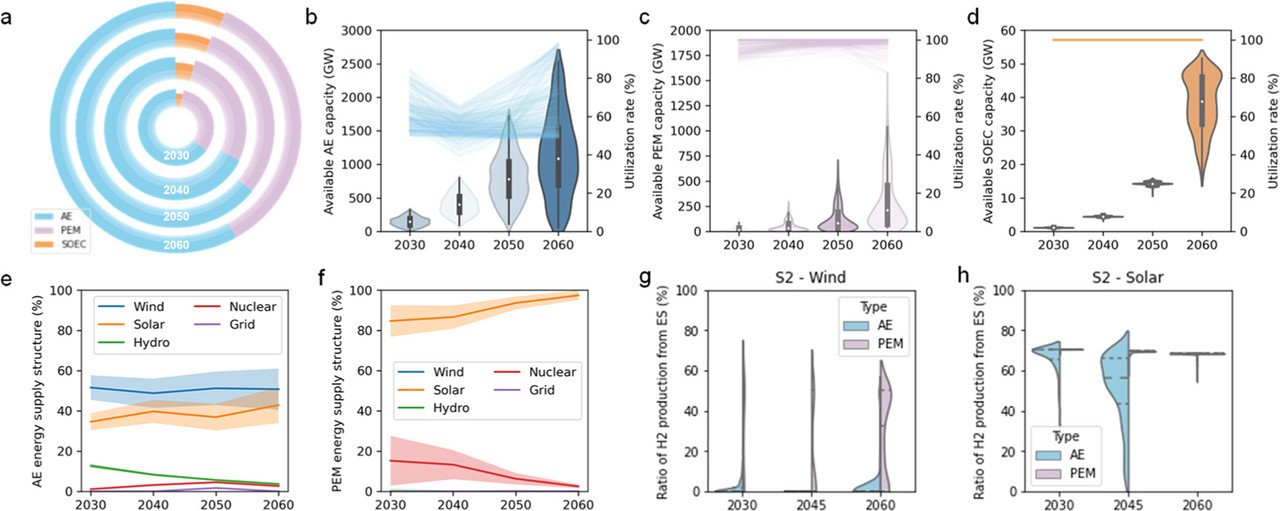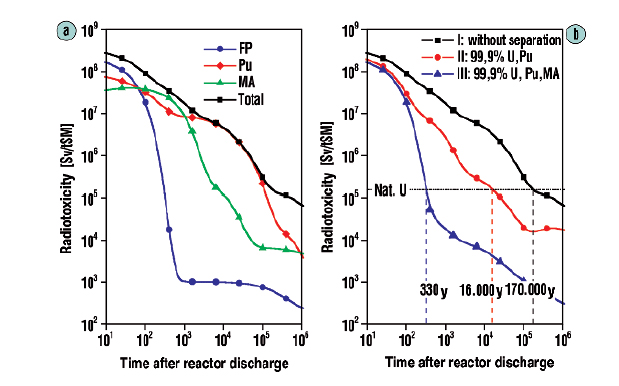Environment & Energy
Related: About this forumPlans for "Green" Hydrogen Transition in China: An Amusing Paper Involving Doubly Wasteful Energy Storage.
We hear a lot of what I regard as fossil fuel greenwashing about hydrogen, in this space often coupled with slick marketing videos about hydrogen cars, hydrogen trucks, hydrogen trains, blah, blah, blah in China. We can look forward I guess to slick videos about hydrogen food processors, hydrogen lawn mowers, and hydrogen children's toys.
Nothing is too absurd.
I spent some time a while back pointing out that hydrogen is made, with exergy destruction, overwhelmingly made by the steam reformation of dangerous fossil fuels and thus is an important driver of the extreme global heating we are now experiencing and have little hope of addressing.
A Giant Climate Lie: When they're selling hydrogen, what they're really selling is fossil fuels.
The paper I will briefly discuss in this post, from late July of this year reports data on the source of Chinese hydrogen used in these Potemkin fossil fuel marketing videos as of now, followed by soothsaying about the future. Note that these videos are often accompanied by pictures of Chinese solar farms, all of which will be massive piles electronic waste in about 25 years, more or less "by 2050." The fossil fuel salespersons and salesbots in this space, looking to rebrand wastefully fossil fuels as "hydrogen," are also noted for their antinuclear rhetoric, such rhetoric having been spectacularly successful in demonizing the last best, hope for driving the coal, gas, and petroleum industries out of business, and arresting the acceleration of extreme global heating, nuclear energy. The same people/bots like to post criticism of the safety of batteries while ignoring the many cases of hydrogen explosions, despite the trivial position of consumer hydrogen (which is a good thing) relative to the wide distribution of batteries.
This is the paper: Assessing Transition Pathways of Hydrogen Production in China with a Probabilistic Framework Zihan Zhen, Xunmin Ou, Yu Wang, and Sheng Zhou Environmental Science & Technology 2024 58 (30), 13263-13272.
Note there is talk about a "transition" in the title. People act as if there is an "energy transition" underway, which is nonsense. Things are getting worse with respect to the use of fossil fuels, not better. Talk of an "energy transition" is all soothsaying, and far more expensive than paying a psychic 25 bucks at the Jersey shore to tell you if your girlfriend who left you for a wealthy stockbroker will come back to you. Trillions of dollars have been spent on the Potemkin "energy transition," and things are getting worse faster, not better. We are using more fossil fuels than ever before.
From the introduction to the paper:
Currently, research related to quantitative roadmaps does not adequately discuss uncertainty. In fact, during the low–carbon transition, factors such as technological evolution, policy-making, and available natural resources are considerably uncertain. (16) The probabilistic framework aims to quantify the impact of the aforementioned uncertainties through large-sample simulations, which better reflects the joint effects of high-dimensional parameter uncertainties compared to conventional sensitivity analysis. (17,18) Employing a probabilistic framework to enhance uncertainty quantification will help researchers clarify the potential range of research results and further obtain statistically reliable conclusions. Moreover, it will also hold promise for advancing scientific policy-making (17) and will facilitate informed investment decisions for stakeholders. (12)
Through a detailed literature review (Table S1 summarizes the current state of relevant studies), (5,11,12,16,19−26) we found that only a few studies (1,12) have employed probabilistic frameworks, typically based on simplistic methods such as technology diffusion models. However, considering that the aforementioned methods fail to provide detailed technical characterizations and strategies for infrastructure investment and operation, energy system models remain the mainstream method in this domain. (27) It is worth noting that energy system models often entail a large number of parameters and complex model structures, which necessitate a higher demand for uncertainty analysis and are accompanied by increased challenges. (28−30) Currently, despite some attempts to incorporate probabilistic frameworks into energy system models (Table S2 summarizes the current state), (17,31−37) there have been no studies specifically focused on hydrogen production transition. It is worth noting that many researches (20,26) providing quantitative roadmaps for hydrogen low-carbon transition exhibit a notable sensitivity to cost parameters, rendering their conclusions highly questionable, (27) which further demonstrates the necessity of employing the probabilistic framework...
I added the bold. In other words, we have no idea how this really might work; we want to bet the farm though that it will work, somehow, in someway.
OK then...
Some more, later on, including the part that would be really, really, really amusing were it not so tragic:
I added the bold for the part that's, for a lack of a better term, "sick" since charging a battery loses energy to entropy (exergy destruction), discharging a battery loses energy to entropy, and electrolysis loses energy to entropy, and pressurizing hydrogen to store it, or worse, liquefy it, loses energy to entropy. In short, this is a proposal to waste energy, huge amounts of it, thus raising the external cost, the external cost being the one that actually matters, the cost to the environment and human health. The reason that one needs to waste energy by charging a battery to run an electrolyzers is because all electrolyzers exhibit hysteresis, a period of time during which they consume energy without producing any hydrogen, when they restart after being idle.
One sees these things, and one doesn't really want to believe they're being taken seriously.
Some figures from the paper follow.
The source of the primary energy to drive the electrolyzers, and the other approaches to hydrogen, including the fossil fuel marketing scheme CCS, carbon capture and storage, which has not worked, is not working and won't work, although it gets lots and lots and lots of marketing press is described in the first figure:

The caption:
It would appear that unlike fossil fuel salespeople and salesbots here and elsewhere working to rebrand fossil fuels as "hydrogen," the Chinese have no insane hostility to the world's last, best hope of ending fossil fuel dependency, nuclear energy. Indeed they note that one electrolyzer technology, SOEC, solid oxide electrolytic cells, will not work at all with variable energy and only nuclear energy will work.
The caption refers to the supplemental data for the paper, which is free to access and can be found here: Environmental Science & Technology 2024 58 (30), 13263-13272 supplemental data.
Tables S9, S10, and S11 offer soothsaying about various "scenarios" - "scenario" being the IEA terms for soothsaying based on a number of "if" statements, usually involving super optimistic statements about so called "renewable energy" despite the fact that the already trillion dollar expenditures on this lipstick on the fossil fuel pig has done effectively nothing to address extreme global heating, since under the expenditures the rate of extreme global heating is accelerating, not decelerating despite these expenditures.
Only the values from the entry for 2020 are likely to be based on actual data beyond soothsaying. For convenience, I'll produce them here from table S9:

BG refers to biogas reforming, CG, to coal reforming, SMR, steam methane reforming, natural gas reforming, and EXT refers to industrial byproducts, presumably oil refining. Based on the data for 2020, which is probably the most accurate, in "percent talk" that advocates of so called "renewable energy" like to use to obscure its uselessness, 98.88% of the hydrogen used to power those Chinese devices in the ads posted here was generated by the use of dangerous fossil fuels, accompanied by exergy destruction. Solar energy produced 0.3%, hydro, 0.8%.
Are the ads misleading? Um, um, um...
Note that in figure 1, a nuclear source of hydrogen is shown that does not involve the waste associated with electrolysis, which in my view will always be a wasteful nonstarter. This is "THP," "thermochemical hydrogen production" via a thermal water splitting cycle, of which my favorite is the "SI cycle," which is amenable to process intensification in which electricity becomes a side product of a nuclear power plant. A recent publication by Chinese scientists working on this hydrogen cycle is here: Bo Ling, Zhihua Wang, Jinxu Zhang, Yong He, Yanqun Zhu, Kefa Cen, Comprehensive comparative analysis of open-loop and closed-loop iodine-sulfur thermochemical cycle for hydrogen production, International Journal of Hydrogen Energy, Volume 48, Issue 40, 2023, Pages 14941-14953
Figure 2 also shows this state of affairs, that hydrogen production in China is overwhelmingly dominated by fossil fuels now, soothsaying aside:

Another figure with happy talk about electrolyzers:

In the conclusion, the operative sentences are these:
According to the soothsaying, in 2060, hydrogen production will be adding between between 0.6 to 1.75 billion tons of carbon dioxide to the planetary atmosphere. That's just optimism though; on this path things will get far worse. The distance between 2060 and now the same as the distance between 2024 and 1988. If you were alive in 1988, did you think the world would be like the one in which you live now?
Just asking...
Personally, I have no use for soothsaying; it's not data. The data is in. The atmosphere is undergoing a rapid collapse.
Have a nice Sunday.
in2herbs
(3,050 posts)generating stations built in the 60s were adapted to turn the nuclear waste into pellets, which in turn, shortened their nuclear activity to about 100 years instead of thousands of years. The pellets could also be used in other applications while "disintegrating." I am against nuclear energy because of the length of time the waste remains active, but the video opened the possibility to changing my mind.
Do you know anything about this? And, if you do, could you comment?
Thanks
NNadir
(34,344 posts)...I have long argued that all of the components of used nuclear fuel are extremely valuable, in particular the once through uranium which in general makes up the bulk of the mass. This is because once through uranium contains the isotope 236U which does not occur naturally and is the precursor to 237Np, itself the precursor to 238Pu, the plutonium isotope that powers spacecraft but also has the property of making plutonium unusable for nuclear weapons.
The chief transuranium actinides found in used nuclear fuel are plutonium, neptunium, americium, and curium. All of these have critical masses and therefore all are useful as nuclear fuel, particularly if they are allowed to accumulate in large amounts, which they must do if we are to save the world since nuclear energy is the last best hope of the human race.
It would take a very long time to list all of the potential uses for fission products; if one is inclined, one can leaf through my journal here, where I have discussed many of them.
The fear of used nuclear fuel is not commensurate with the actual risk, which is extremely low, almost to the point of vanishing. It's a media creation.
However, let's cut to the chase about energy "waste." The difference between used nuclear fuel, often characterized out of ignorance as to what is involved, as "nuclear waste," and fossil fuel waste is that the latter kills people - and is killing the planet with extreme global heating - and used nuclear fuel has accumulated a 70 year record of being stored, largely on site, without killing anyone.
The death toll from fossil fuel waste in the form of air pollution, fossil fuel waste, is about 7 million people a year, and to show this, I keep handy a reference and excerpt with my commentary from one of the most important medical journals in the world, Lancet.
It is here:
Here is what it says about air pollution deaths in the 2019 Global Burden of Disease Survey, if one is too busy to open it oneself because one is too busy carrying on about Fukushima:
If one runs the numbers, this works out to about 19,000 people killed per day, roughly by air pollution, or 800 people per hour.
I invite, often, people concerned about so called "nuclear waste" to show that in the 70 year history of the storage of used nuclear fuel, that it has killed as many people as will die today from air pollution, indeed as many people as will die from air pollution in the next 10 hours, 8,000 people. For evidence of this case, I will only accept references from the primary scientific literature as opposed to junk websites.
Note that if someone were to die from used nuclear fuel storage, the "but her emails" and "Joe Biden's old" media would go into a major festival of ignorance pushing, whereas they don't remark at all on the deaths of fossil fuel, or if they do, it's in obscure settings.
They miss the point, a truism: Nuclear energy need not be without risk to be vastly superior to everything else. It only needs to better than everything else, which it is.
I have very little tolerance for this "thousands of years" nonsense, often stated as "millions of years" or even "billions of years." The world has always been radioactive and always will be, but it can be shown that in a continuous fuel recycling program, after about 1000 years of the utilization of clean nuclear energy that the overall radioactivity of the planet will be reduced because of the relative short half life of most fission products and the elimination of some of the uranium driving the uranium decay chain.
I made reference to this in an earlier post, with references, here: 828 Underground Nuclear Tests, Plutonium Migration in Nevada, Dunning, Kruger, Strawmen, and Tunnels It's a long post, with many scientific references, but if you look, it's there.
The relevant excerpt:

The caption:
(Hartwig Freiesleben, The European Physical Journal Conferences · June 2013)
Source 17, in German, is this one: Reduzierung der Radiotoxizität abgebrannter Kernbrennstoffe durch Abtrennung und Transmutation von Actiniden: Partitioning. Reducing spent nuclear fuel radiotoxicity by actinide separation and transmutation: partitioning.
All of the components of used nuclear fuel are valuable and are essential to the survival of the planet and the ecosystems not already destroyed by fossil fuel waste. Some of those components, like the interesting metal technetium, and of course, neptunium, plutonium, americium and curium, can be obtained no where else.
I hope this helps you to keep an open mind.